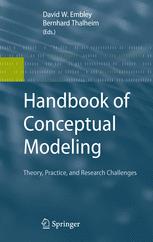

Most ebook files are in PDF format, so you can easily read them using various software such as Foxit Reader or directly on the Google Chrome browser.
Some ebook files are released by publishers in other formats such as .awz, .mobi, .epub, .fb2, etc. You may need to install specific software to read these formats on mobile/PC, such as Calibre.
Please read the tutorial at this link: https://ebookbell.com/faq
We offer FREE conversion to the popular formats you request; however, this may take some time. Therefore, right after payment, please email us, and we will try to provide the service as quickly as possible.
For some exceptional file formats or broken links (if any), please refrain from opening any disputes. Instead, email us first, and we will try to assist within a maximum of 6 hours.
EbookBell Team

4.4
92 reviewsConceptual modeling is about describing the semantics of software applications at a high level of abstraction in terms of structure, behavior, and user interaction.
Embley and Thalheim start with a manifesto stating that the dream of developing information systems strictly by conceptual modeling – as expressed in the phrase “the model is the code” – is becoming reality. The subsequent contributions written by leading researchers in the field support the manifesto's assertions, showing not only how to abstractly model complex information systems but also how to formalize abstract specifications in ways that let developers complete programming tasks within the conceptual model itself. They are grouped into sections on programming with conceptual models, structure modeling, process modeling, user interface modeling, and special challenge areas such as conceptual geometric modeling, information integration, and biological conceptual modeling.
The Handbook of Conceptual Modeling collects in a single volume many of the best conceptual-modeling ideas, techniques, and practices as well as the challenges that drive research in the field. Thus it is much more than a traditional handbook for advanced professionals, as it also provides both a firm foundation for the field of conceptual modeling, and points researchers and graduate students towards interesting challenges and paths for how to contribute to this fundamental field of computer science.